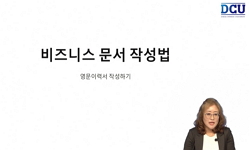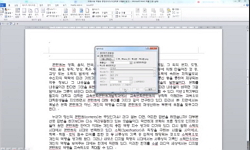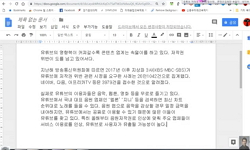본 논문의 주된 관심은 중세 시대에 가장 보편적인 문자 커뮤니케이션 양식이었던 서간에 대한 위조가 전반적으로 어떻게 이루어졌는지, 특히 인장이나 메신저와 같은 서간의 외적인 요소...
http://chineseinput.net/에서 pinyin(병음)방식으로 중국어를 변환할 수 있습니다.
변환된 중국어를 복사하여 사용하시면 됩니다.
- 中文 을 입력하시려면 zhongwen을 입력하시고 space를누르시면됩니다.
- 北京 을 입력하시려면 beijing을 입력하시고 space를 누르시면 됩니다.

커뮤니케이션의 관점에서 본 중세의 서간 문화와 위조 = A Study of Medieval Epistolary Culture and Forgery from the Perspective of Communication
한글로보기https://www.riss.kr/link?id=A100111528
- 저자
- 발행기관
- 학술지명
- 권호사항
-
발행연도
2014
-
작성언어
Korean
- 주제어
-
등재정보
KCI등재
-
자료형태
학술저널
-
수록면
93-114(22쪽)
-
KCI 피인용횟수
3
- 제공처
- 소장기관
-
0
상세조회 -
0
다운로드
부가정보
국문 초록 (Abstract)
본 논문의 주된 관심은 중세 시대에 가장 보편적인 문자 커뮤니케이션 양식이었던 서간에 대한 위조가 전반적으로 어떻게 이루어졌는지, 특히 인장이나 메신저와 같은 서간의 외적인 요소들이 어떻게 위조에 이용되었는가를 살펴보는데 있다. 서간이 위조된 양상을 살펴보기 위해서 우선 중세의 서간이 어떤 방식으로 생산되었는가를 살펴본다. 서기(scribe)나 비서의 대필(dictation)을 통한 서간 생산 및 인증(authentication) 절차와, 메신저를 통한 서간 유통 과정에 대한 고찰은 중세 서간이 위조에 취약할 수밖에 없었던 구조적 지점들에 대하여 생각해 볼 기회를 제공한다. 그 다음으로 인장과 메신저가 관계된 실제적인 위조 양상들을 살펴본다. 13세기 이후에 인장이 가장 보편적인 문서 인증 방식으로 자리를 잡으면서 인장을 이용한 위조가 빈번히 발생했는데, 인장 소유주의 허가 없이 인장을 재사용하거나 남용하는 방식이나, 좀 더 대범한 경우에는 인장의 틀인 매트릭스 자체를 위조하는 등의 방식으로 이루어졌다. 중세 서간 메커니즘의 또 다른 대표적인 외적 조건인 메신저는 종종 발신자의 대리인 자격으로 인장과 같이 문서를 인증하는 역할도 수행했다. 하지만 메신저가 자신이 전달하는 메시지 혹은 편지를 위조하는 경우들이 종종 있었기 때문에 메신저는 서신 커뮤니케이션의 잠재적인 불안 요인이었다. 마지막으로 위조를 행한 중세인들에게 위조가 어떤 의미를 가졌는가도 생각해 본다. 중세 시대 위조가 대부분 고위 성직자나 수도자들을 중심으로 행해진 소위 “화이트칼라 범죄”였다는 점과, 이들 성직자들은 위조를 통하여 세속의 간섭과 억압으로부터 신앙공동체를 보호하는 자신들의 행위를 신 앞에서 정당하다고 믿었다는 점을 생각해 본다.
다국어 초록 (Multilingual Abstract)
The general concern of this essay is with illuminating from the perspective of communication the ways in which letters, as the most popular mode of the medieval written communication, were forged. More in particular, how such external factors of the l...
The general concern of this essay is with illuminating from the perspective of communication the ways in which letters, as the most popular mode of the medieval written communication, were forged. More in particular, how such external factors of the letter as seals and messengers were utilized in the execution of forgery is the utmost interest of the paper. Prior to examining the specific features of medieval forgery, I will look into the ways that letters in the Middle Ages were produced and circulated in general. This should be an important undertaking because spotlighting the dictation of the letter with scribes or secretaries, the authentification process through such specific devises as seals, and the circulation of the letter through messengers will provide the opportunity to consider the structural vulnerability that may make letters susceptible to forgery. Afterwards, I will take a look over specific examples of forgery, where seals and messengers appear to play the integral roles in the act of forgery. Letters and documents were forged consistently with seals, as seals became a most dominant method of authenticating documents in the later Middle Ages. The forgery with seals was made principally in the form of reusing or abusing seals without owners’ awareness, and in even more daring cases, the frame of the seal called a matrix was copied, again, without the owner’s permission. Another important external element of the medieval epistolary or documentary business, the messenger, who was in charge of circulation, seems to have very often played the role of the writer’s deputy, whereby, similarly to seals, he worked to authenticate what he brought to the recipient. However, now that messengers were more often than not witnessed to forge the message and/or the letter, as well as to lose it, he was considered one principal source of anxiety and insecurity in the medieval epistolary communication. Lastly, I will speculate on the implications of forgery to medieval forgers. More than anything, it should be noted that forgery in the Middle Ages can be seen as the so-called “white-collar crime,” in that most people involved in the act were prelates, abbots, and monks who constituted the body of the medieval intellectuals and elites. It must be also noted that those religious who committed themselves to forgery firmly believed that, through the act of forging letters and documents of different kinds and periods, they were protecting the church and their communities from the interventions and oppressions of the secular powers, and therefore their acts should be judged pious and loyal, even before God.
참고문헌 (Reference)
1 차용구, "중세의 사료위조에 대한 심성사적 접근" 한국서양중세사학회 10 (10): 1998
2 H. Fuhrmann, "중세로의 초대" 이마고 309-, 2003
3 "lettre -, In Middle English Dictionary" U of Michigan
4 A. Hiatt, "The Making of Medieval Forgeries: False Documents in Fifteenth-Century England" The British Library & U of Toronto P 2004
5 G. Schneider, "The Culture of Epistolarity: Vernacular Letters and Letter Writing in Early Modern England, 1500-1700" University of Delaware P 28-, 2005
6 C. Brooke, "Medieval Church and Society" Sidgwick & Jackson 1971
7 G. Constable, "Letters and Letter-Collections" Éditions Brepols 1976
8 M. Clanchy, "From Memory to Written Record" The Folio Society 308-, 1997
9 Clanchy, "From Memory to Written Record"
10 Constable, "Forgery and Plagiarism in the Middle Ages" 29 : 19-, 1983
1 차용구, "중세의 사료위조에 대한 심성사적 접근" 한국서양중세사학회 10 (10): 1998
2 H. Fuhrmann, "중세로의 초대" 이마고 309-, 2003
3 "lettre -, In Middle English Dictionary" U of Michigan
4 A. Hiatt, "The Making of Medieval Forgeries: False Documents in Fifteenth-Century England" The British Library & U of Toronto P 2004
5 G. Schneider, "The Culture of Epistolarity: Vernacular Letters and Letter Writing in Early Modern England, 1500-1700" University of Delaware P 28-, 2005
6 C. Brooke, "Medieval Church and Society" Sidgwick & Jackson 1971
7 G. Constable, "Letters and Letter-Collections" Éditions Brepols 1976
8 M. Clanchy, "From Memory to Written Record" The Folio Society 308-, 1997
9 Clanchy, "From Memory to Written Record"
10 Constable, "Forgery and Plagiarism in the Middle Ages" 29 : 19-, 1983
11 A. Crafton, "Forgers and Critics: Creativity and Duplicity in Western Scholarship" Princeton UP 37-42, 1990
12 G. Constable, "Forged Letters in the Middle Ages" 16 : 1986
13 E. Brown, "Falsitas pia sive reprehensibilies: Medieval Forgers and Their Intentions" 16 : 1986
14 B. B. Rezak, "Abbot Suger and Saint-Denis: A Symbolism" Metropolitan Museum of Art 1-, 1986
15 P. D .A. Harvey, "A Guide to British Medieval Seals" U of Toronto P 5-, 1996
동일학술지(권/호) 다른 논문
-
아우구스티누스의 『삼위일체론(De Trinitate)』의 구조와 장르
- 한국서양중세사학회
- 김경수 ( Kyung Soo Kim )
- 2014
- KCI등재
-
- 한국서양중세사학회
- 이정민 ( Jeong Min Lee )
- 2014
- KCI등재
-
12∼13세기 교회의 비판을 통해 본 마상창시합의 실상
- 한국서양중세사학회
- 유희수 ( Hee Soo Lew )
- 2014
- KCI등재
-
- 한국서양중세사학회
- 남종국 ( Jong Kuk Nam )
- 2014
- KCI등재
분석정보
인용정보 인용지수 설명보기
학술지 이력
| 연월일 | 이력구분 | 이력상세 | 등재구분 |
|---|---|---|---|
| 2026 | 평가예정 | 재인증평가 신청대상 (재인증) | |
| 2020-01-01 | 평가 | 등재학술지 유지 (재인증) |  |
| 2017-01-01 | 평가 | 등재학술지 유지 (계속평가) |  |
| 2013-01-01 | 평가 | 등재학술지 유지 (등재유지) |  |
| 2010-01-01 | 평가 | 등재학술지 유지 (등재유지) |  |
| 2007-01-01 | 평가 | 등재학술지 선정 (등재후보2차) |  |
| 2006-01-01 | 평가 | 등재후보 1차 PASS (등재후보1차) |  |
| 2004-01-01 | 평가 | 등재후보학술지 선정 (신규평가) |  |
학술지 인용정보
| 기준연도 | WOS-KCI 통합IF(2년) | KCIF(2년) | KCIF(3년) |
|---|---|---|---|
| 2016 | 0.21 | 0.21 | 0.23 |
| KCIF(4년) | KCIF(5년) | 중심성지수(3년) | 즉시성지수 |
| 0.25 | 0.21 | 0.807 | 0.08 |





 KCI
KCI eArticle
eArticle







